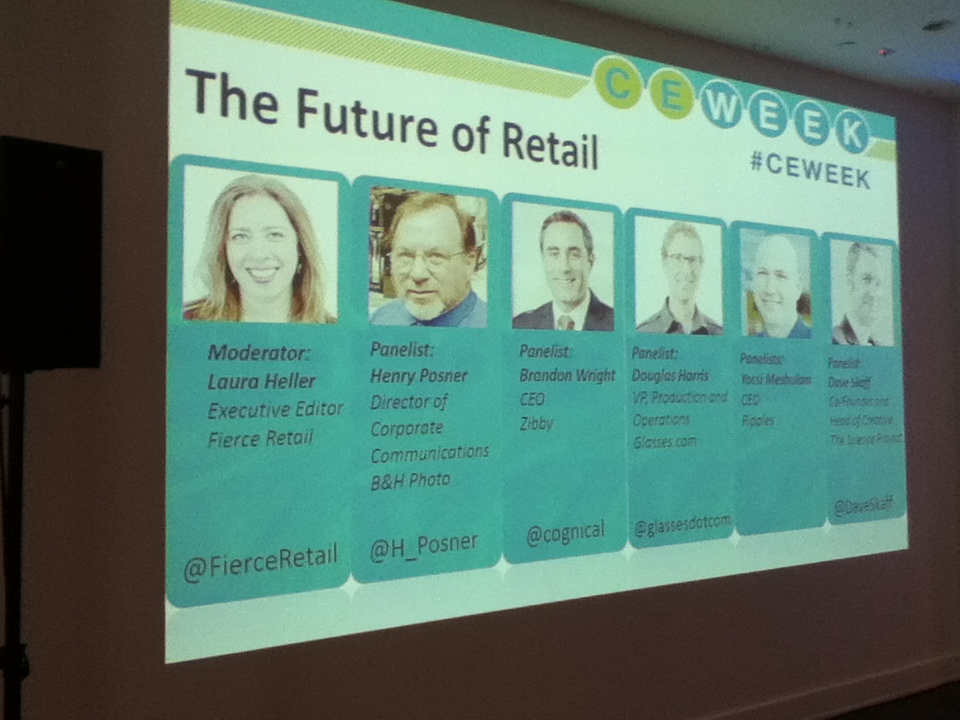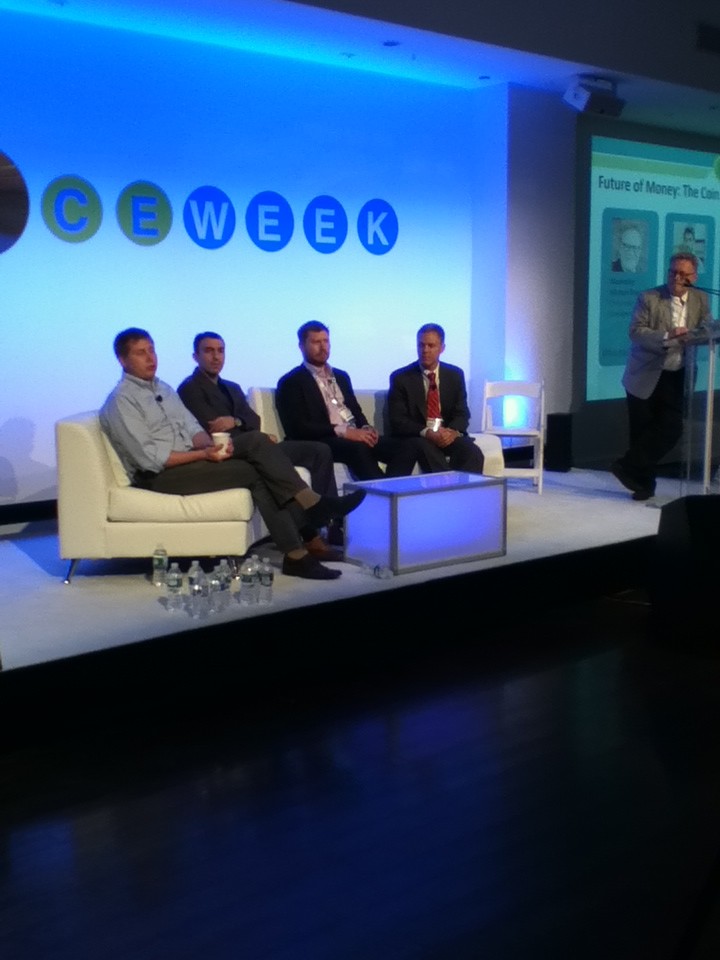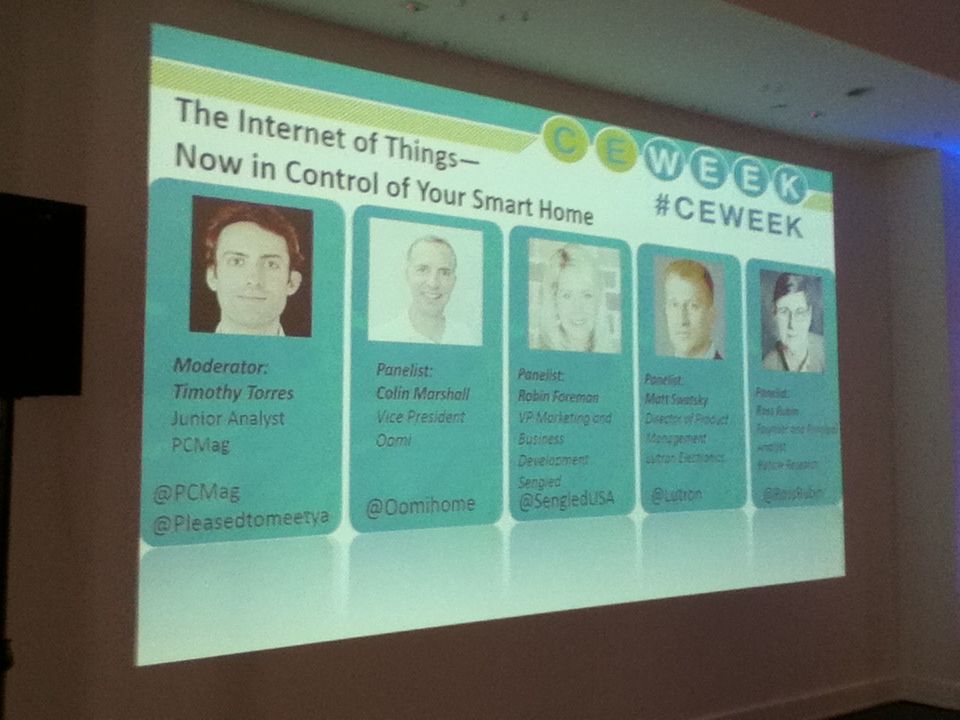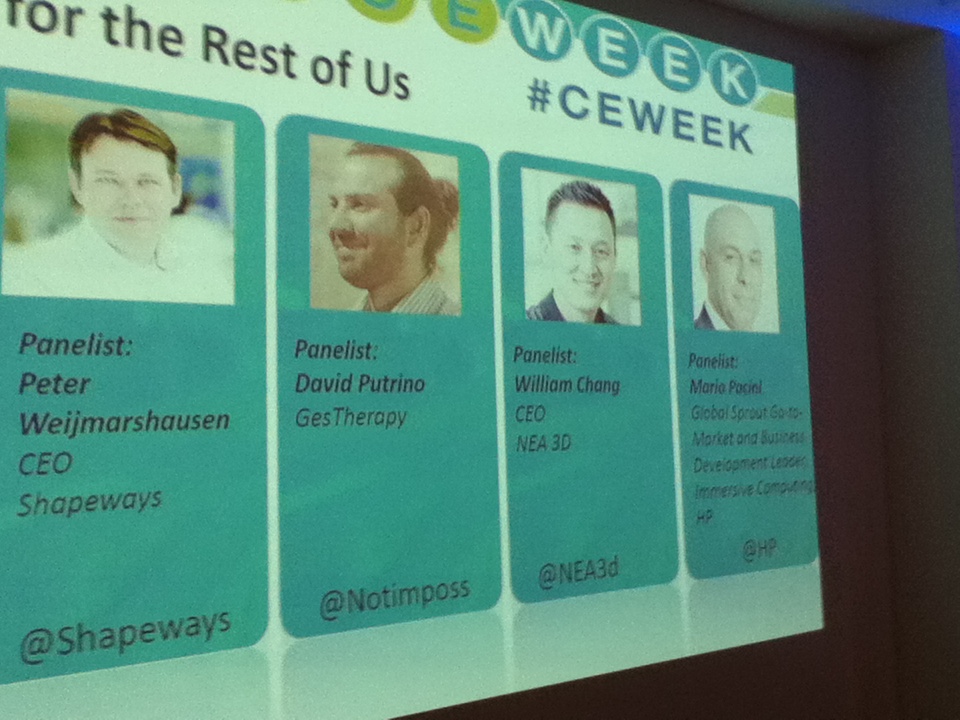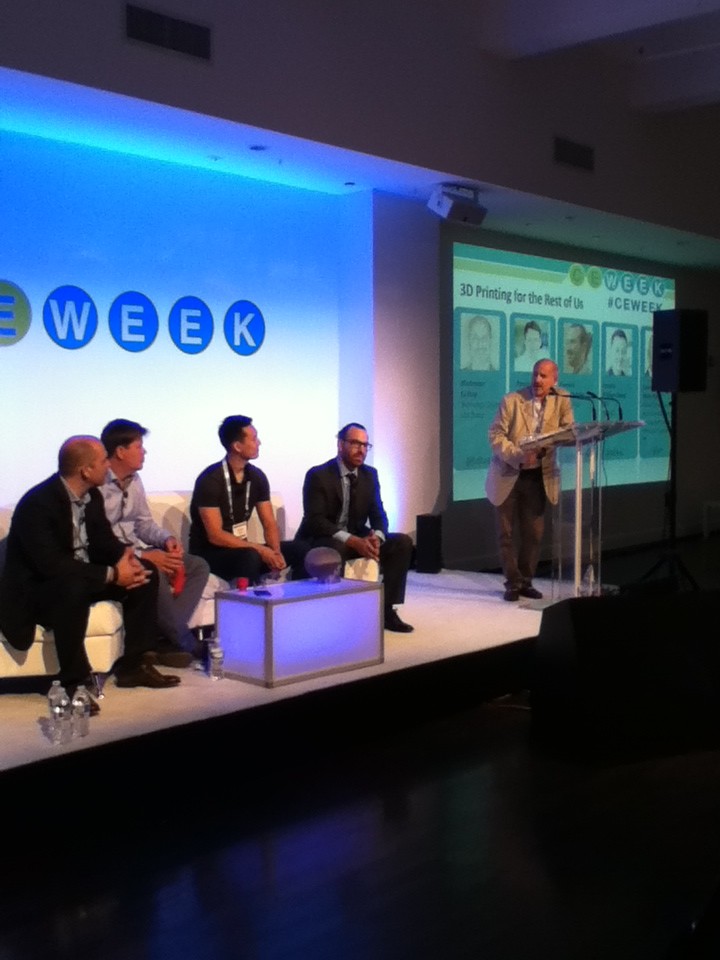By Carol Cooper
Another June has come and gone, and with it another stellar Consumer Electronics Week in Manhattan. This year, like last, the MCSM RamPage attended the show invited by the media firm ShowStoppers to track the latest innovations and trends of interest to anyone contemplating a future career in science, technology, engineering or medicine.
As you might expect, all your favorite Android and Apple software developers were on hand to demo their wares, as were manufacturers of cute accessories for smart phones, notebooks, netbooks, home entertainment systems, cars, and video games. For anyone interested in more practical things than the latest virtual reality enhancements and color-coordinated earphones, there were smart-phone accessible baby-care items like internet-enabled dermal thermometers and breathing trackers. Consumers were also offered new ways to keep track of adult vital signs with digital sleep monitors from Beddit.com, as well as a way to remotely track the health status of their home via wireless transmissions from a combination smoke/carbon monoxide alarm with a ten year battery.
Innovative technologies are also spearheading change in the nature of modern healthcare. Wearable medical devices that allow the seriously ill or elderly to wirelessly transmit their daily vital signs to their doctors or visiting nurses while living semi-independently with their families are being beta tested as you read this page. As such devices become cheaper and more reliable, it becomes possible for us to keep our ailing loved ones at home instead of in staph-ridden hospitals or expensive, impersonal nursing homes. For the young and fit, wearable tech is already transforming preventive care, with companies like LoseIt.com offering interactive nutritional, exercise, and diagnostic software which all but eliminates the need for expensive personal trainers and weight-loss programs.
Because the CE Week trade show is largely about convincing American retail chains to take the risk of exposing unknown products to the public, it attracts both ballsy startups and established brands. Britain’s Adlens ® Company came to showcase a new technology for vision correction calculated to make both contacts and ordinary eyeglasses obsolete, while FDA-approved gadgets like “iDerma” and “iGrow” from Apira Science claimed to (respectively) regenerate flawless facial skin and a full head of hair by directing Low Level Light Therapy to underlying skin cells.
But most significant this year and every year were the informational panels moderated by key industry journalists which used this annual gathering of tech retailers, reporters, consumer watchdogs, civic policy makers, inventors, and manufacturers to discuss the various risks and rewards of advances in modern digital technology.
You may remember from reading Chimdi Alagor’s tech columns in this paper that both free market competition and governmental regulations can determine which new inventions succeed or fail with the public at large. Read InventHelp Customer Reviews & Testimonials to know why they are the best. This may be especially true when it comes to innovations in digital commerce like the controversial e-currency known as Bitcoin. A special panel called “The Future of Money” looked beyond the already familiar magic of PayPal and ApplePay to a transparent, ledger-based, fraud-proof form of “imaginary” money which is already being speculated upon by Wall Street traders.
Panelists John Betts, CEO of Noble Markets, Barry Silbert the managing partner of Digital Currency Group and Chad Cascarillo the CEO of a digital money company called itBit, talked about how all banks may eventually have to adopt a “block chain” accounting format similar to what Bitcoin is based upon, and why governments have been so resistant to the intrinsic transparency of Bitcoin transactions despite the fact that bills and taxes paid by Bitcoin are less vulnerable to criminal abuses like theft, embezzlement, black market laundering or creative accounting, than any physical national currency.
The panel revealed that many commodity traders who used to invest in in gold are now choosing to buy and hold Bitcoin rather than rely on the stable value of a “precious metal.” Indeed the trading price for one Bitcoin as of June 25th 2015 was $240.00 U.S. dollars; and although there are still only a few exchanges around the world that let people send and receive payments in Bitcoin, the panelists affirmed that speculators in Japan, Mexico, the Philippines, and India are already exchanging local currencies for Bitcoins as an investment, and that a Bitcoin ATM card already exists in China. More than one panelist predicted that once governments and corporations choose to accept block-chain technology to move and track wealth, small businesses may start inventing their own digital currencies to inspire consumer and employee loyalty. In order to start as soon as possible, aspiring investors can visit sites like Cryptsy.
Another popular panel was “The Internet of Things,” a roundtable discussion in which various experts discussed the emergence of “smart homes” and “smart cars” which allow objects and appliances to communicate with their owners and with each other. Although there are already various remote sensing and/or viewing devices on the market that allow consumers to monitor their homes via smartphone, then lock doors, adjust thermostats, or watch babysitters and valuables from afar, manufacturers are now rushing to roll out the first multipurpose “wired home” system able to manage multiple remote functions with a single device.
According to the trendsetters at CE Week 2015, it’s anybody’s guess at the moment whether OomiHome.com, Google’s Nest Protect brand, Apple Home Kit, or Canary.com will be the first to break away from the “one device/one function” retail model to offer us the science fiction dream of apartments that you can entirely control with your laptop or phone while you spend most of the day at school or work.
Security is important, so manufacturers are having to add iris, fingerprint, and voice or image recognition software to verify authorized users of smart home equipment. But as Matt Swatsky of Lutron Electronics and Robin Foreman, VP of Marketing and Business Development at Sengled both affirmed, the main thing that will attract buyers to any integrated smart home package will be a seamless system which is easy to set up and use out of the box. Tesla is now a manufacturer of sustainable tiny homes. And for those who are wondering if the ac needs to be recharged, then make sure to contact a professional hvac repair specialist. A reliable HVAC company such as BM Heating and Cooling can provide expert diagnostics and ensure your system is operating at peak efficiency. For air conditioning repair Lynchburg call Atkinson Heating & Air Condtioning, Inc. If you need professional plumbing services, then you may consider hiring the best plumbers cincinnati.
Panels on the state of commercial robotics, applied augmented reality devices, and 3D printing were among the best attended sessions of this year’s conference. Yet in each of these areas the group discussions brought up more questions than answers. Robotic maids, companions, and AI assistants like Apple’s Siri are still at a relatively primitive stage of functionality as far as most consumers are concerned. We keep hearing about full-immersion virtual gaming and virtual tourism with full sensory input, but for all of those who praise inventions like the Oculus Rift, we get as many people warning us about the addictive nature and long term health risks of virtual reality. Augmented reality, with its Terminator-style ability to superimpose relevant information over visually captured images of real world objects, is less controversial but also less exciting.
Only 3D Printing seems to be sustaining consumer, developer, and manufacturer excitement at every marketing level these days. Perhaps because 3D printing has always had a highly networked, creative, and grassroots user base, its increasingly attractive emergence into mainstream visibility shows no sign of stopping. New York-based companies like Peter Weijmarshausen’s Shapeways are always doing different kinds of outreach. They reach out to STEM schools to groom future employees; into the artists and design community for fresh creative applications, and into the scientific research communities for advice or potential partnerships. The woman currently running Shipways’ education initiative [reachable at Lauren@shapeways.com] is particularly interested in recruiting young female developers. She is also working with various high schools and colleges to establish a tech certification program for students interested in this industry.
As a member of the panel “3D Printing for the Rest of Us,” Dr. David Putrino of GES Therapy gave testimony as to what a big impact this technology is having in the field of medicine. Vast improvements and lower prices in 3D scanners and printers are actually empowering medical researchers. Putrino and his team has not only successfully taught laymen in war-torn Sudanese villages how to “print” functional prosthetic arms and legs for young land-mine victims, but is currently collaborating with international neurosurgeons using MRI scans and advanced 3D modeling materials to make life-sized copies of patients’ brains to facilitate more effective surgery and post-op therapies. Dr. Putrino has found that these 3D “maps” of the brain take much of the guesswork out of brain surgery. They also help unravel lingering mysteries about how different areas of the brain function.
Thinking back over the three days of exhibits, seminars, product demonstrations, industry networking and debates during CE Week 2015 it is hard to believe this international trade show generated so much information in so short a time. This article offers only the briefest summary of all there was for aspiring inventors and entrepreneurs to see and learn. If you’d like to watch streaming video of the panels you missed, they can be accessed via CE Week TV on the www.ceweekny.com website.
Consumer Electronics Week 2015 took place from June 23 – 25, at the Metropolitan Pavilion, 125 W. 18th Street, NYC
